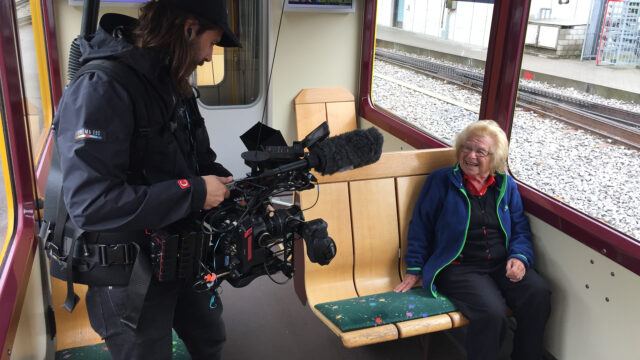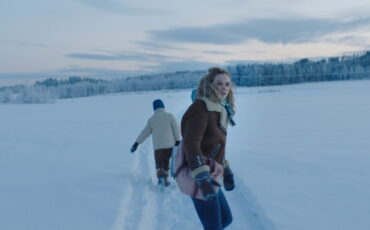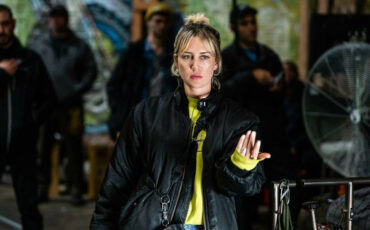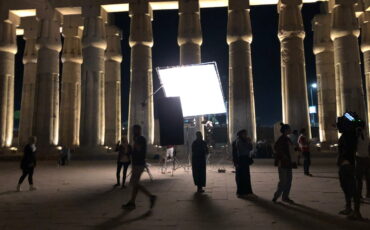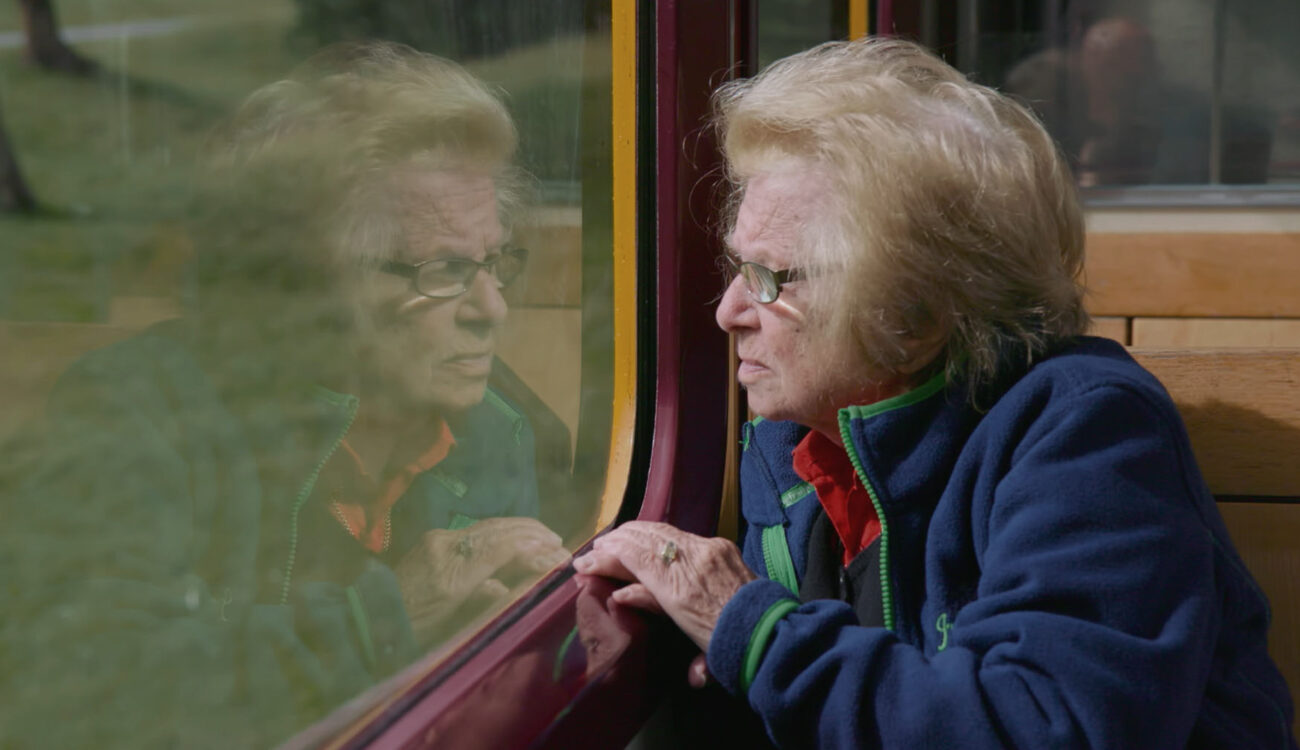
It’s a 19 degree Fahrenheit winter wonderland outside, and that must mean we’re at Sundance Film Festival 2019 in Park City, Utah. Thankfully we have a whole host of wonderful documentaries to help keep us warm! Director of Cinematography, David Paul Jacobson discusses his work on the feature documentary, Ask Dr. Ruth. The film follows Dr. Ruth’s journey from survivor of the Holocaust to famed sex therapist.
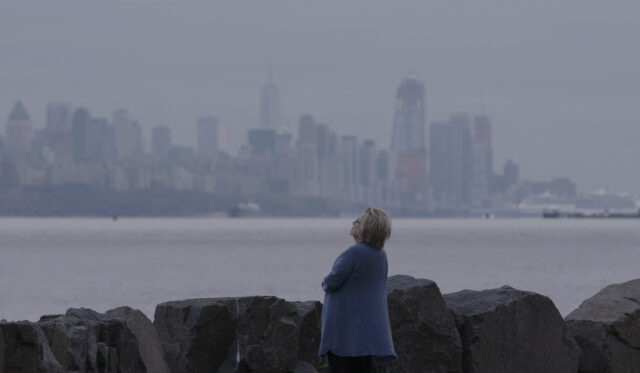
A still from Ask Dr. Ruth by Ryan White, Courtesy of Sundance Institute | photo by David Paul Jacobson
DP: David Paul Jacobson
FILM: Ask Dr. Ruth (dir. Ryan White)
SUNDANCE CATEGORY: Doc Premieres
CAMERA: Canon C300 MK II
GLASS: Zeiss CP2, Canon L, Angenieux Zoom
cinema5D: What was your approach to shooting Ask Dr. Ruth?
DPJ: Films are not made in a vacuum, and each individual project deserves its own approach. With most of Ask Dr. Ruth, I was a camera department of one, which informed much of the approach.
Nearly half of Dr. Ruth’s 90 years have been spent in front of some recording device, but we wanted this project to feel different for her. Keeping a small footprint was a practical consideration to maintain as intimate an environment as possible. Dr. Ruth didn’t feel like she was on one of her talk show sets with lights, crew and all the vanities. It made her far less performative and hopefully shows the audience a side of her that they’ve never seen before. As the person responsible for the look of the film, this posed some challenges. In the end, it pushed me into a much more instinctual and reactive approach to shooting that taught me a lot.
cinema5D: Did the need to maintain a small footprint help decide your camera choice?
DPJ: Ryan and I both used our C300 Mark IIs. We’re big fans of the system for documentary work because it’s reliable, the colors are great, the latitude is impressive and it’s infinitely scalable to our needs. Ryan would usually hand hold the camera in a simple stripped down configuration and I would build out my camera for shoulder mounted handheld or Easyrig.
cinema5D: What lenses did you use? Why?
DPJ: I own a set of Zeiss CP.2 super speeds and a wide assortment of Canon L series glass. The Zeiss primes were great when subjects were generally not moving much, but we relied on L series zooms quite a bit, mostly out of necessity. Dr. Ruth is always on the move and would constantly strike up conversations in the most precarious of places. Canon’s zooms offered good image quality and kept the overall size of the camera package down. Towards the end of the production, we started renting Angenieux EZ 1 and 2 lenses. I liked them so much that I’m now a proud owner. The usefulness of a zoom paired with a fast T2 aperture can not be overstated with documentary work.
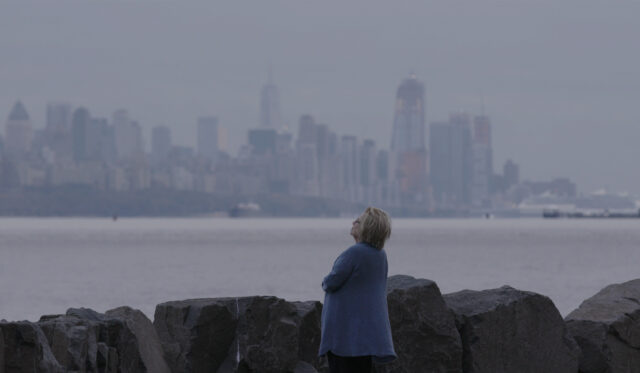
A still from Ask Dr. Ruth by Ryan White, Courtesy of Sundance Institute | photo by David Paul Jacobson
cinema5D: Talk a little about pre-production for this project. Did you and director, Ryan White, watch any films together?
DPJ: We mostly discussed the things we wouldn’t have. Intimacy and nimbleness were key for this production. It was clear from the beginning that I wasn’t going to have any camera or lighting support, so I had to build a camera package that could be carried entirely by myself. I was up for the challenge, but it was definitely outside my comfort zone.
cinema5D: Had you worked together before?
Ryan and I have worked together a number of times, and I know what he wants as a director. Since we were shooting mostly verite with Ruth, our conversations were often about the vocabulary of lensing and camera movement— which lenses to shoot Ruth with and at what proximity. I was warned about Ruth’s kinetic nature and I really wanted the camera to reflect that. Instead of staying far away on longer lenses, I wanted to be wide, close and at Ruth’s diminutive 4’7” level whenever possible.
cinema5D: How did you and the director, Ryan White, work together during production?
DPJ: Ryan and I have a great instinctual relationship. One of the hardest things to do as a documentary shooter is to stop an action or disrupt a moment because something isn’t working visually. Ryan always supports me in those moments and helps keep talent at ease. Documentary directors always want to be shooting, as they should, so it’s great to have his support. Ryan is also my B camera operator. He is always carrying a camera around with him and knows when a scene demands cross coverage or little detail shots that I don’t have the time to grab in the moment.
cinema5D: Did you use any new tech or tools for this shoot?
DPJ: Dr. Ruth is 4’7”, and I’m a little over 1’ taller than her. I knew that I either needed to start doing squats at the gym or the camera was just not going to live on my shoulder. I didn’t want to use any gimbals or steadicam rigs since it was just me, so I settled on an Easyrig with the Flowcine Serene arm. While not perfect, it became an essential tool. The ability to track around with reasonable stability at Ruth’s eye level or below was exactly the look I wanted and wouldn’t have been achievable with anything else.
David Paul Jacobson’s other credits include work on HBO’s The Jinx and Room 104 and The Keepers for Netflix. You can view more of his work on his website HERE.
You won’t have to wait long to check out the film. Hulu snagged the rights to the project in advance of the festival, so stay tuned for info on when Ask Dr. Ruth goes live to your living room.
